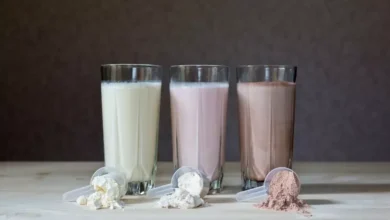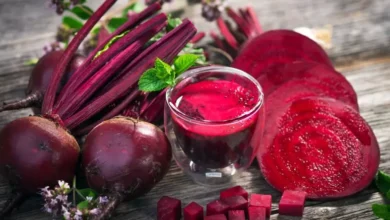How to Break Sugar Addiction Without Feeling Miserable
Sugar is everywhere—in your morning coffee, your afternoon snack, even in foods you’d never expect like salad dressing or pasta sauce. And while the occasional sweet treat is totally okay, too much added sugar can lead to cravings, mood swings, energy crashes, weight gain, and even chronic health issues like diabetes and heart disease.
The problem? Sugar is addictive. It lights up the brain’s reward center just like a drug, making it hard to quit. But here’s the good news: you can break free from sugar addiction—without feeling miserable.
Let’s explore how to do it step by step, with real strategies that work and actually feel good.
Why Sugar Feels So Addictive
When you eat sugar, your brain releases dopamine, a feel-good chemical. This triggers a temporary high, followed by a crash—and then another craving.
Over time, your body starts to rely on sugar for energy and emotional comfort. This can create a cycle of:
- Craving
- Eating sugar
- Temporary energy and mood boost
- Crash
- More cravings
The key to breaking this cycle is not just cutting sugar—but also replacing it with real nourishment, balance, and better habits.
Signs You May Be Addicted to Sugar
- You crave sweets daily (or multiple times a day)
- You often feel tired, irritable, or foggy without sugar
- You struggle to stop once you start (just one cookie turns into five)
- You rely on sugar for comfort, reward, or stress relief
- You crash after meals and feel the need for a “pick-me-up”
If this sounds familiar, you’re not alone—and you can absolutely change it.
Step 1: Know Where Sugar Hides
Sugar isn’t just in candy and desserts. It’s hidden in many processed and packaged foods, including:
- Flavored yogurts
- Granola bars
- Pasta sauces
- Salad dressings
- Ketchup
- Breakfast cereals
- Bread and bagels
- Fruit juices and smoothies
Read nutrition labels. Look for added sugars under names like:
- Sucrose
- Glucose
- High-fructose corn syrup
- Dextrose
- Cane sugar
- Evaporated cane juice
- Maltose
- Syrup
Even “healthy” products can be loaded with added sugars.
Step 2: Reduce Sugar Gradually
Going cold turkey works for some people, but for most, it leads to withdrawal symptoms like headaches, irritability, and fatigue.
Instead, cut back slowly to make the process easier and more sustainable:
- If you add 2 spoons of sugar to your coffee, reduce to 1, then ½
- Swap sugary snacks for fresh fruit or dark chocolate
- Dilute juices with water or sparkling water
- Choose unsweetened versions of yogurt, almond milk, or cereals
Each small change helps retrain your taste buds and reduce dependency.
Step 3: Eat More Real, Whole Foods
One of the best ways to fight sugar cravings is to nourish your body properly. Often, cravings come from nutrient imbalances or hunger.
Focus on:
- Protein: chicken, eggs, tofu, Greek yogurt, legumes
- Healthy fats: avocado, nuts, seeds, olive oil
- Fiber-rich carbs: oats, quinoa, sweet potatoes, whole fruits and veggies
These foods stabilize blood sugar, keep you full, and reduce the need for sugary snacks.
Step 4: Don’t Skip Meals
Skipping meals leads to low blood sugar, which leads to cravings. Eat regular, balanced meals every 3–4 hours to keep energy and mood stable.
If you feel a sugar craving coming on, ask:
- Did I eat enough today?
- Am I actually hungry—or just tired or stressed?
Step 5: Swap Sugar for Better Alternatives
When you want something sweet, choose options that are naturally sweet and nutrient-rich:
- Instead of candy → try dates with nut butter or frozen grapes
- Instead of ice cream → try banana “nice cream” or Greek yogurt with berries
- Instead of soda → try sparkling water with citrus
- Instead of milk chocolate → try dark chocolate (70%+ cacao)
You don’t have to give up sweetness—you just need to find smarter sources.
Step 6: Identify Emotional Triggers
Sugar cravings aren’t always about hunger—they’re often about comfort, boredom, or stress.
Start noticing your patterns:
- Do you crave sugar when you’re overwhelmed at work?
- When you’re lonely or tired at night?
Find non-food ways to cope, like:
- Taking a walk
- Calling a friend
- Journaling or meditating
- Drinking tea
- Listening to music
You don’t need sugar to soothe your emotions—you need to care for yourself in healthier ways.
Step 7: Stay Hydrated and Well-Rested
Dehydration can mimic sugar cravings. So can sleep deprivation.
- Aim for at least 8 cups of water per day
- Get 7–9 hours of quality sleep each night
When your body is well-rested and hydrated, it craves sugar less and regulates hunger more effectively.
Step 8: Be Kind to Yourself
Breaking sugar addiction is a process, not a race. You may have days when you slip up—and that’s okay.
Instead of guilt, practice curiosity:
- What triggered the craving?
- How did I feel before and after eating?
- What could I do differently next time?
Progress is more important than perfection.
Final Thoughts: You’re Stronger Than Sugar
Sugar may be addictive—but you’re in control. With the right tools, nourishing meals, emotional awareness, and gentle consistency, you can reduce your dependence on sugar and feel more energized, balanced, and in tune with your body.
You don’t have to quit sugar forever or live in restriction. You just need to choose what truly fuels you—physically, mentally, and emotionally.
Start with one change today. Your body (and mind) will thank you.

Hello! My name is Alan Teixeira and I am passionate about helping people live healthier, more balanced lives. From mindful eating to daily habits that promote physical and mental well-being, I believe that small, consistent changes can lead to powerful transformations.
I created this blog to share practical tips, reliable information, and thoughtful insights that can inspire you to take better care of yourself—with balance, mindfulness, and positivity.
If you are looking to improve your health, nourish your body, and build a lighter, more fulfilling routine, you are in the right place. Welcome!





